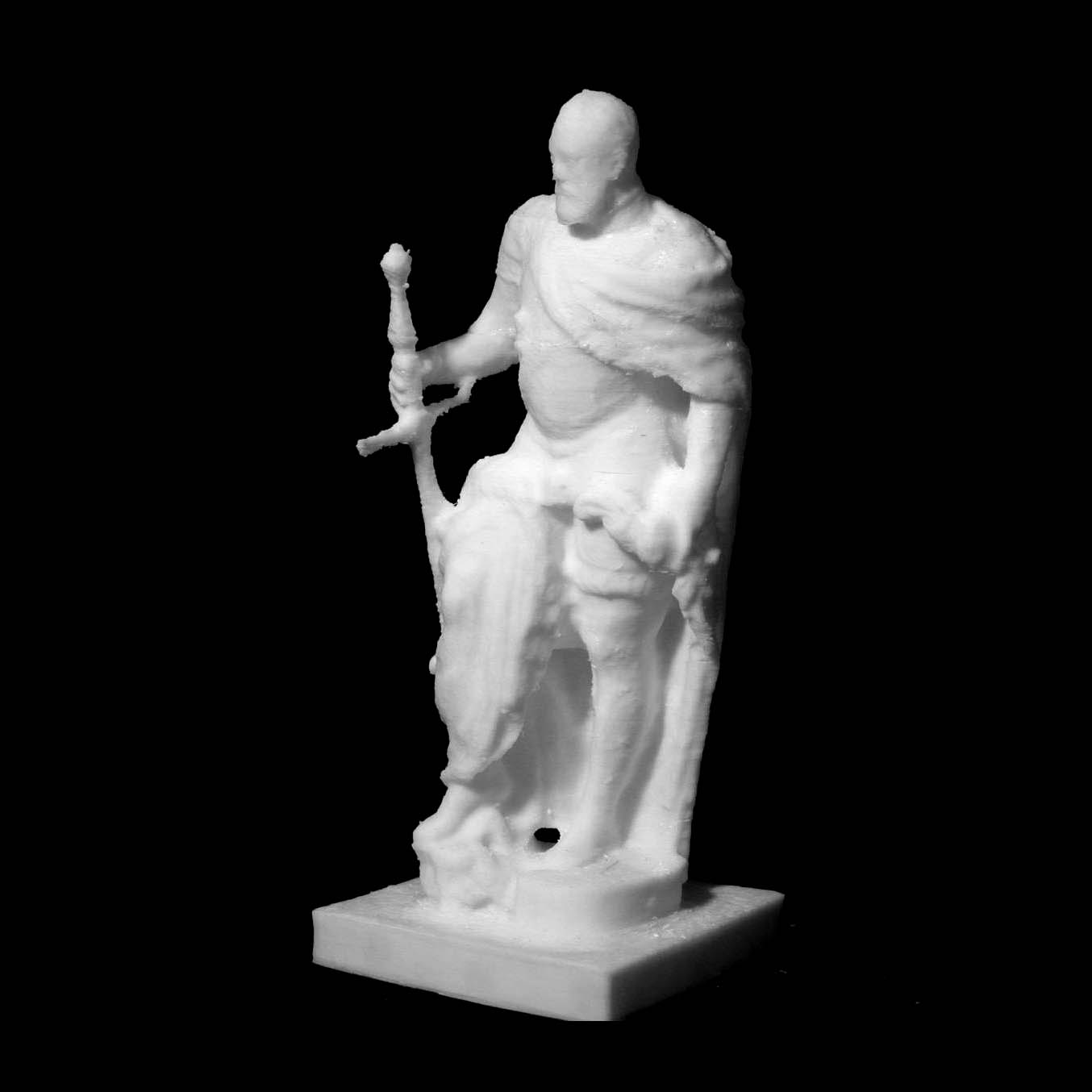
Charles V in Prisenhof, Ghent
myminifactory
Charles V (24 February 1500 – 21 September 1558), a powerful Duke of Burgundy and Holy Roman Emperor, ruled both the Spanish Empire from 1516 and the Holy Roman Empire from 1519. He also controlled Habsburg Netherlands from 1506 until his voluntary abdications between 1554 and 1556. Through inheritance, Charles brought together vast territories in western, central, and southern Europe, along with Spanish colonies in the Americas and Asia. His domains spanned nearly four million square kilometers, earning him the title of "the empire on which the sun never sets". Charles was the heir to three prominent European dynasties: Valois-Burgundy (Netherlands), Habsburg (Holy Roman Empire), and Trastámara (Spain). He inherited the Burgundian Netherlands and Franche-Comté from his House of Valois-Burgundy lineage. From his own Habsburg dynasty, he acquired Austria and other central European lands. Charles was also elected to succeed his Habsburg grandfather, Maximilian I, as Holy Roman Emperor, a title held by the Habsburgs since 1440. He inherited the crowns of Castile from the Spanish House of Trastámara, which included a nascent empire in the Americas and Asia, and Aragon, with its Mediterranean empire extending to Southern Italy. Charles was the first king to rule Castile and Aragon simultaneously in his own right, earning him the title of the first King of Spain. The personal union under Charles of the Holy Roman Empire with the Spanish Empire resulted in the closest Europe came to a universal monarchy in the post-classical era. Many enemies feared that Charles's vast inheritance would lead to a universal monarchy and European hegemony. His reign was marked by war, particularly three major conflicts: the Habsburg-Valois Wars with France, the struggle to halt the Ottoman advance, and the Protestant Reformation resulting in conflict with German princes. The wars with France, mainly fought in Italy, resulted in the recovery of lost territory and included the decisive defeat and capture of Francis I of France at the Battle of Pavia in 1525. France recovered, but the wars continued throughout Charles's reign. Enormously expensive, they led to the development of the first modern professional army in Europe, the Tercios. The struggle with the Ottoman Empire was fought in Hungary and the Mediterranean. After seizing most of eastern and central Hungary in 1526, the Ottomans' advance was halted at their failed Siege of Vienna in 1529. A lengthy war of attrition continued for the rest of Charles's reign on his behalf by his younger brother Ferdinand. In the Mediterranean, although there were some successes, Charles was unable to prevent the Ottoman naval dominance and piratical activity of the Barbary Corsairs. Charles opposed the Reformation and clashed with Protestant Princes in Germany who were motivated by both religious and political opposition to him. Despite rebellions not being a frequent concern for Charles, he quickly put down three particularly dangerous rebellions in Castile, the Frisian lands, and later in Ghent. However, once the rebellions were quelled, the essential Castilian and Burgundian territories remained mostly loyal to Charles throughout his rule. Charles's Spanish dominions were the chief source of his power and wealth. As his reign progressed, his Spanish realms became increasingly important. In the Americas, Charles sanctioned the conquest by Castillian conquistadors of the Aztec and Inca empires. Castillian control was extended across much of South and Central America, resulting in a vast expansion of territory and flows of South American silver to Castile with profound long-term effects on Spain. Charles abdicated at 56 but after 34 years of energetic rule, he was physically exhausted and sought the peace of a monastery where he died at 58. On Charles's abdications, the Holy Roman Empire was inherited by his younger brother Ferdinand (who had already received Austrian lands in 1521). The Spanish Empire, including possessions in the Netherlands and Italy, was inherited by Charles's son Philip II. The two empires remained allies until the 18th century. This object is part of "Scan The World". Scan the World is a non-profit initiative introduced by MyMiniFactory, through which we are creating a digital archive of fully 3D printable sculptures, artworks, and landmarks from across the globe for public access. Scan the World is an open-source community effort; if you have interesting items around you and would like to contribute, email stw@myminifactory.com to find out how you can help. Scanned: Photogrammetry (Processed using Agisoft PhotoScan)
With this file you will be able to print Charles V in Prisenhof, Ghent with your 3D printer. Click on the button and save the file on your computer to work, edit or customize your design. You can also find more 3D designs for printers on Charles V in Prisenhof, Ghent.
